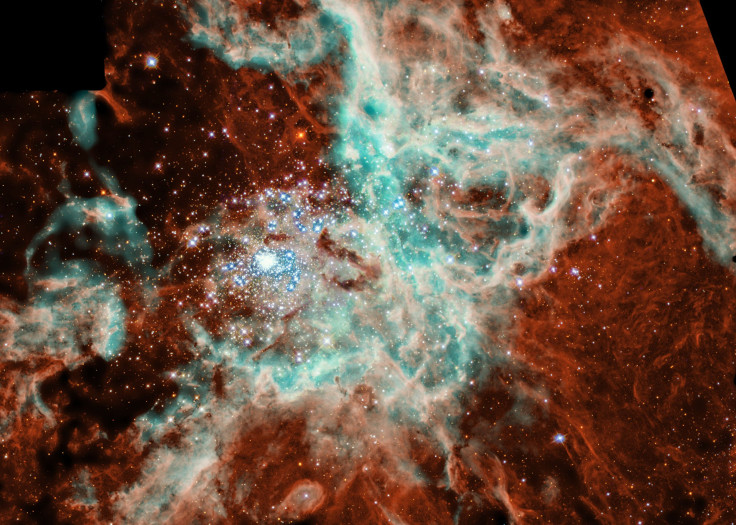NASA's Hubble Captures Amazing Star Cluster Almost As Old As Universe Itself [PHOTO]

NASA has released a stunning image of a star cluster almost as old as the universe itself.
Taken by the NASA/ESA Hubble Space Telescope, a new image posted on the U.S. space agency's Twitter page showed the NGC 1466, an ancient, glimmering star cluster with an age of around 13.1 billion years old. It is nearly as old as the universe, which is estimated to be 13.7 billion years old, plus or minus about 130,000 years, based on measurements made by NASA's WMAP spacecraft.
Stellar Saturday! This star cluster has a mass of 140k Suns & an age of around 13.1 billion yrs — making it almost as old as the universe itself. By comparing star luminosities, we can measure the distance to the stars 🌟 Catch a glimpse with @NASAHubble: https://t.co/RjsZsZ5JED pic.twitter.com/3INNfyqyne
— NASA (@NASA) February 2, 2019
NGC 1466 is a gathering of stars all held together by gravity, otherwise known as a globular cluster. According to NASA's website, the cluster is slowly moving in the cosmos on the fringers of one of Milky Way's neighboring galaxies, the Large Magellanic Cloud. This globular cluster, which is located around 160,000 light-years away, apparently has a mass equivalent to around 140,000 Suns.
The NGC 1466 also has 49 known RR Lyrae variable stars, which scientists use to measure distances in the universe. Due to their well-defined luminosities, the total amount of energy they emit is also easily measured. Scientists could use this information to find out the distance to these stars by comparing their known luminosity to how bright they appear in the sky. Known as standard candles, the RR Lyrae variable stars are significant in what is called the cosmic distance ladder.
Meanwhile, NASA also recently released another image of a galaxy taken by the Hubble.
While using the Hubble to study the globular cluster NGC 6752, scientists stumbled upon stars in the cluster's outer fringes that did not actually belong. The stars were actually much farther away and part of the dwarf spheroidal galaxy dubbed Bedin 1. The galaxy is about 30 million light-years away and is believed to be the most isolated small dwarf galaxy discovered so far.
The Bedin 1's estimated age is around 13 billion years old, making it another living fossil from the early universe.
© Copyright IBTimes 2024. All rights reserved.





















